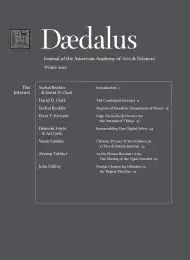The Contingent Internet
The Internet is so omnipresent and pervasive that its form may seem an inevitability. It is hard to imagine a “different” Internet, but the character of the Internet as we experience it today is, in fact, contingent on key decisions made in the past by its designers, those who have invested in it, and those who have regulated it. With different choices, we might have a very different Internet today. This paper uses past choices made during the emergence of the early Internet as a lens to look toward its future, which is equally contingent on decisions being made today: by industry, by governments, by users, and by the research community. This paper identifies some of those key choices, and discusses alternative futures for the Internet, including how open, how diverse, how funded, and how protective of the rights of its users it may be.
Is it possible that the Internet might never have happened? Is it possible that, in a parallel universe where the Internet’s inventors had pursued different careers, we could be without a network that links all of our computers together? That we might have “personal computers” that were truly personal, not connected to the larger world unless their contents were copied to disk and mailed?
Actually, that alternative outcome is highly improbable. The Internet was in some respects a creation of its time: in the 1960s, the idea of a global network for computers was “in the air.” A visionary of the time, J. C. R. Licklider, had already predicted teleconferencing, information sharing, instant messaging, online tax preparation, offshoring, and the potential for a digital divide.1 However, at the time of the Internet’s launch, there were competing conceptions for how to build a “computer network.” Our alternate universe is not without the Internet, but rather is with a very different Internet.
This possibility may itself seem surprising: the Internet today is so omnipresent, so much a fixture of our lives that it seems almost as if it “had to be that way.” What might an alternate Internet have looked like? This is an important question, because to recognize that there were multiple options for the early Internet, and that the Internet as we know it is contingent . . .
